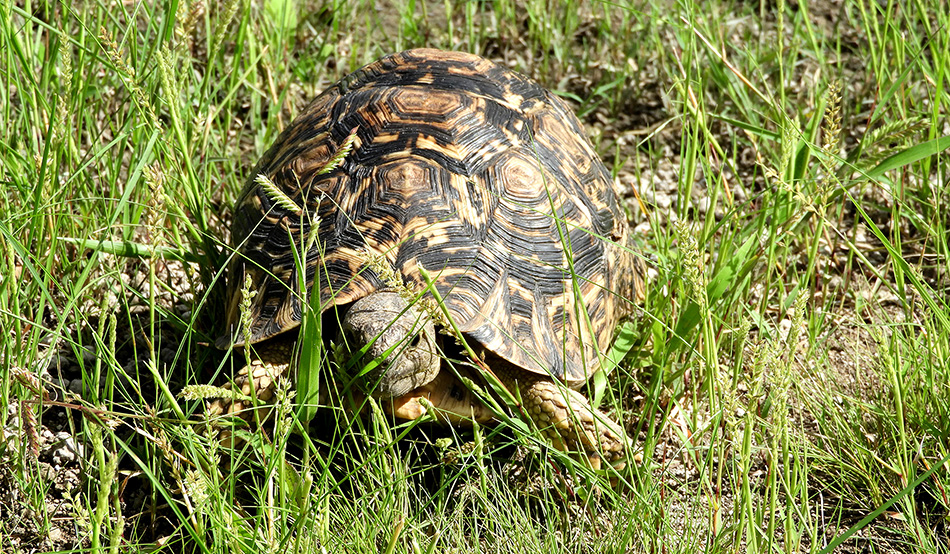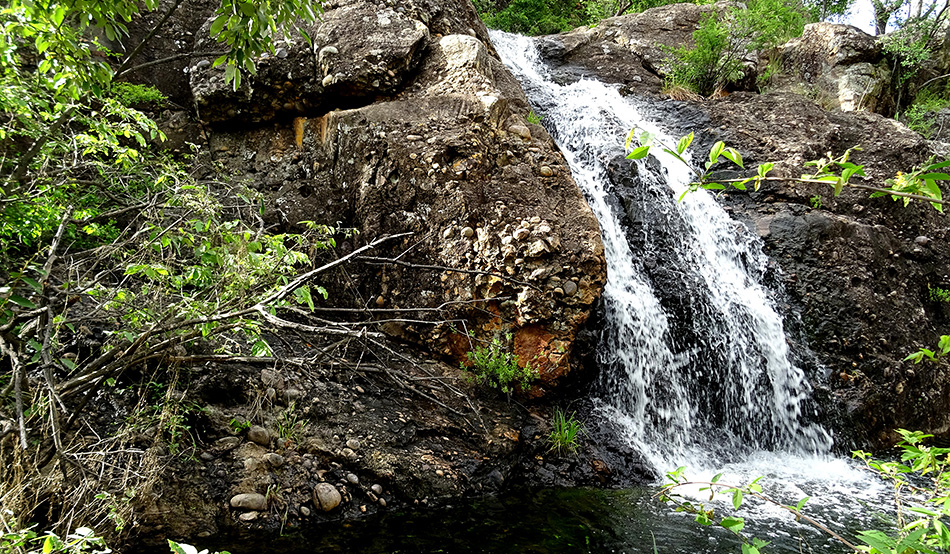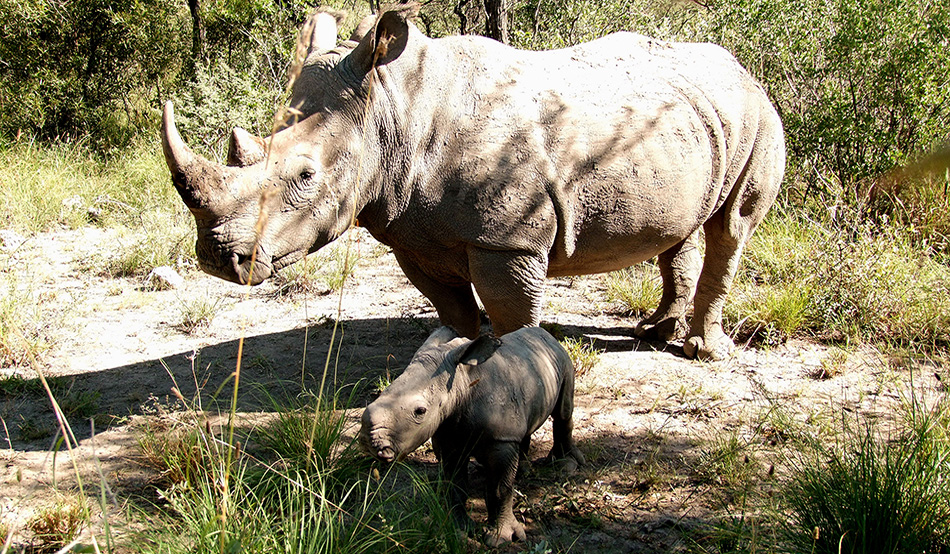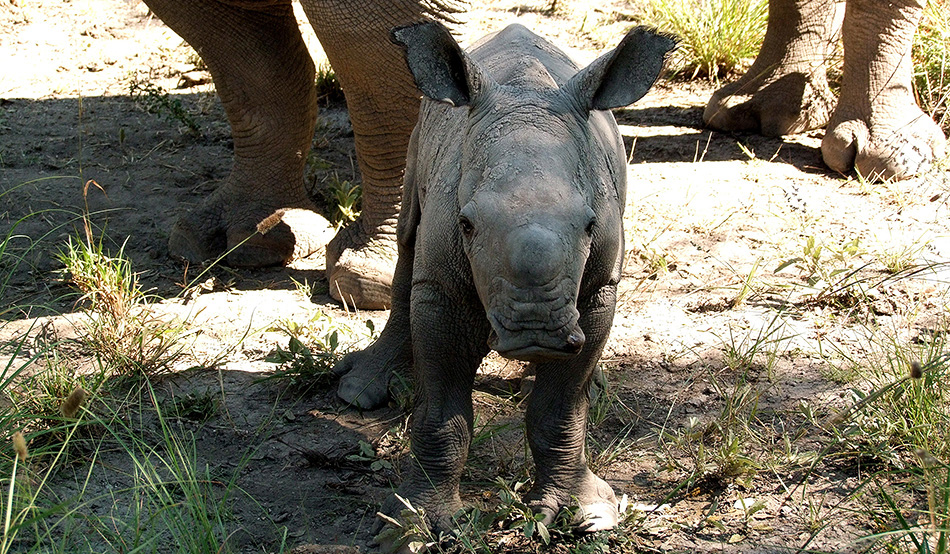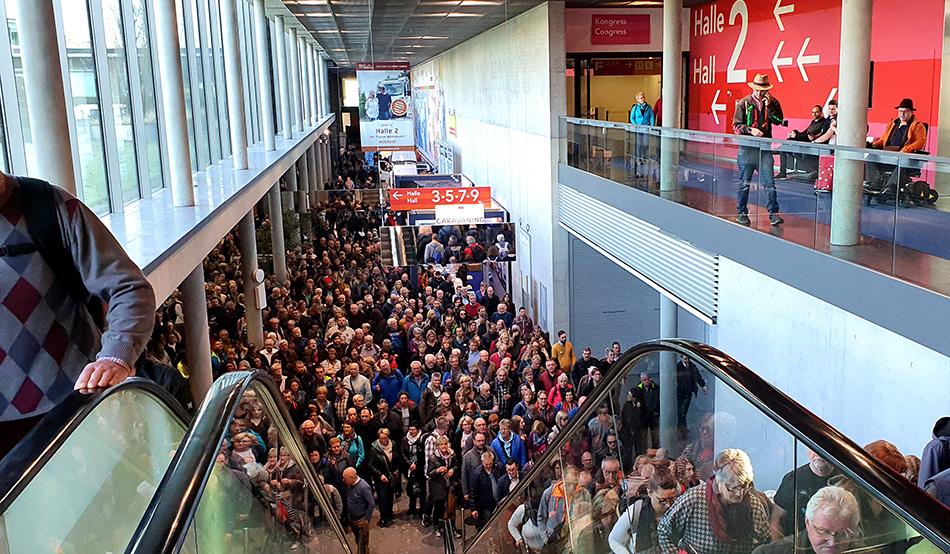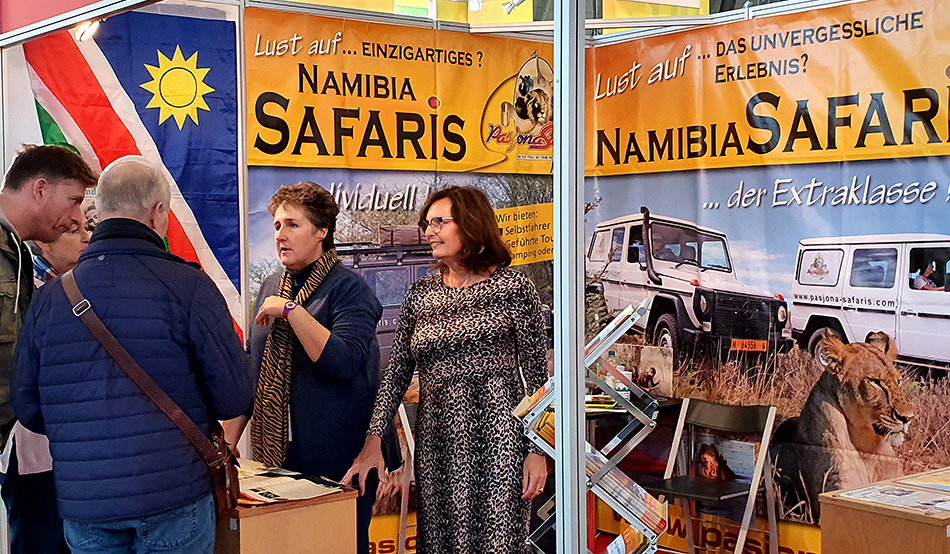News from Ghaub
Your oasis in the Otavi mountainsYou like to stay up to date with what is happening at Ghaub? Subscribe to our newsletter. It is published every three months and contains a potpourri of stories about rhinos and other exciting topics as well as news about Ghaub and its partner companies Waterberg Wilderness (at the Waterberg) and Ondekaremba (at the airport).
Annual rain amount already at halftime
This rainy season will go down in history not only in the south of Namibia. Even in the Otavi Mountains, which are often spoiled by rain, farmers were surprised by the total amount received. In the nature reserve of Ghaub you can see well-nourished game and a permanent resident who otherwise maintains a low profile...
The area of the Otavi Mountains, also known as the "Maize Triangle" for good reason, usually receives significantly more rain than the neighbouring areas. The annual average is about 600 mm. At least on Ghaub, this amount was almost reached already in mid-January with 590 mm. The end of the rainy season is April / May.
The grass sprouted everywhere. A real land of milk and honey for square-lipped rhinos (Ceratotherium simum), red hartebeest (Alcelaphus buselaphus caama), springbok (Antidorcas marsupialis) and other graminivores. But also folivores such as giraffe (Giraffa camelopardalis) or kudu (Tragelaphus strepsiceros) found a richly laid table in the young leaves of the trees and bushes.
Particularly remarkable is that you spot leopard tortoises (Stigmochelys pardalis) much more often than usual. As they are dependent on water, they use the many puddles in the Veld for their search for new areas or a partner.
For a few days there was a very special phenomenon to marvel at on the rock face of Ghaub's elongated "house mountain". In some spots, rainwater cascaded down from the high plateau into the plain.
You can rarely experience a waterfall on a Rhino Drive. However, there are always animals to spot. Even rhinos are almost guaranteed - hence the name of the tour.
By the way: The rain news from Ghaub's partners Waterberg Wilderness and Ondekaremba are exciting, too ...
Consolation sweets for guests of Ghaub
Experiencing rhinos in the wild - up close. Hiking in the Otavi Mountains. Staying in a historic atmosphere. Hundreds of Namibia fans who booked Ghaub were looking forward to this. What a disappointment when Corona got in the way. Ghaub suffers with them - and gives consolation in two ways...
In mid-March the first two cases of SARS-CoV-2 infections were confirmed in Namibia. Both were tourists. President Geingob immediately blocked the main flight connections to Europe. Shortly afterwards, he declared a state of emergency so that his government could act swiftly if necessary. Tourists were no longer allowed to enter the country. Their home countries also closed their borders if they had not already done so.
In April all of Namibia was in a lockdown. The number of confirmed infections remained at 16 for weeks. State of affairs as of April 30th: eight infected, eight recovered, no death. More on the development in Namibia in the news blog of our partner Bush Telegraph Namibia.
From one day to the next, Ghaub no longer had any guests - and therefore no income. On the contrary: Due to travel restrictions, many bookings had to be cancelled and deposits had to be reimbursed. There is little hope of support from the government. Namibia is a developing country. Due to the three-year recession and the severe drought, the state budget is already severely restricted.
No additional help can be expected from the industrialised nations because they have to provide amounts of billions for their own economies. Namibia can count itself lucky if the existing development aid is not cut.
Ghaub Nature Reserve does everything to keep as many of its employees as possible, especially since one has to be aware that each workplace supports eight- to ten-person families. In addition, it is necessary to invest more in the protection of the rhinos and other game because the problem of poaching will worsen, due to increasing unemployment.
Of course, Ghaub will survive this crisis - thanks to its concept of sustainability. Already decades of farm history at Ghaub teach that it is necessary to build up reserves in good years in order to survive periods of drought.
However, the team of Ghaub is grateful for any support. A big thank-you to all those tour operators and hundreds of customers who have rebooked planned stays to next year.
Ghaub Nature Reserve & Farm hereby also expresses its thanks to those other hundreds of customers who had to cancel but waived the refund of their deposit for the time being. They have been sent a voucher that they will be able to redeem after the travel restrictions are lifted. Many thanks also to the tour operators who showed their trust and accepted a credit.
The vouchers are also valid for the partners Waterberg Wilderness (nature reserve with rhinos at the Waterberg) and Ondekaremba (natural paradise directly at the airport). They can also be given to someone who is planning a trip to Namibia. If they cannot be redeemed by the end of 2021, Ghaub will of course refund the amount – depending on the cancellation policy of the original booking.
Last not least in the name of the rhinos, giraffes, eland, red hartebeest, baboons and vervet monkeys, leopards, kudus, oryx antelopes, springboks and many other animals, all members of the Ghaub team would like to thank everyone from the bottom of their hearts. And express their sympathy to all those who had been looking forward to their Namibia trip for months and who could not set out on their journey because of the measures against the Corona epidemic.
But don't worry: Namibia and Ghaub are waiting for their guests. The white rhinos even have a double consolation sweet in store: two rhino calves, as reported in our previous news story below.
Those who visit Ghaub in post-Corona times can experience the young ones with a little luck on a Rhino Drive.
Two rhino calves within a month
It's like two years ago. A rhino cow suddenly disappeared. The Rhino Patrol finally found her – with a calf. When the excitement was just about to subside, the rangers reported further offspring – from a very young cow which almost died in the tender calf age...
Both new calves are heifers. The first was born in mid-March. Proud mother is the oldest rhino cow in the Ghaub Nature Reserve. She already got a calf three years ago in early April – barely a month after a younger cow had calved.
Now the youngest rhino cow at Ghaub apparently wanted to match them. She gave birth to her first calf in mid-April. Since she turned just six years in January, she may be called a teenage mother in human terms. As a matter of fact, white rhinos become sexually mature at the age of five to six years - and the gestation period is 15 months.
The joy at Ghaub is all the greater since the childhood of this rhino cow was ill-starred. At the age of three and a half months, she had seen her mother get into a mud hole and not manage to get out. When the two were found by the Rhino Patrol, it was already too late for her mother.
The little calf tried to flee but was caught. Luckily. Because in the wild it would not have survived. Instead, it was bottle-fed and later fed hay and additives.
It was a great relief when even a bit later older rhinos and the small cow got used to each other and formed a group. White rhino calves are relatively easy to be raised by bottle-feeding. However, during their release they often get killed by older rhinos.
A young bull took special care of the little cow. He often stayed close to her. Over the past few years, the two also explored remote corners of the nature reserve. Therefore, it can be assumed that the young bull is the father of the small heifer calf.
The young mother, by the way, still has a deep confidence in those two-legged beings who caught her and fed her with milk. No one else would have been able to approach for taking photos of her newborn calf without her attacking or at least positioning herself protectively between her calf and the photographer.
Guests of Ghaub can experience the white rhinos on a Rhino Drive and a Rhino Tracking Tour (for more see activities). Since the Rhino Patrol is tracking them down every day and reporting their position, encounters with these fascinating pachyderms are almost guaranteed.
Otavi Mountains pose in Stuttgart
"Ideal stop on tours that lead via Etosha to the Zambezi (Caprivi) region." – "A great tip for vacationers who are visiting Namibia for the second time." This is what tour operators remarked at the trade fair in Stuttgart after they watched the PowerPoint presentation about the region of the Otavi Mountains...
The marketing initiative Omuramba Meander Route was represented at the consumer fair Caravan Motor Touristik (CMT) by Sven-Eric Stender and his agency Bush Telegraph Namibia. He visited German tour operators who offer trips to Namibia and introduced them to the attractions of the region in the northern center of Namibia. Not only the well-known ones like the Hoba meteorite (the largest of its kind on earth) near Grootfontein or the myth-enshrouded Lake Otjikoto north of Tsumeb, but also the less well-known ones like the Cultural Village near Tsumeb or the Thonningii winery near Otavi.
Ghaub, being a member of the initiative and located in the middle of the Otavi Mountains, also featured in the PowerPoint presentation. Rhino Drive and Rhino Tracking with an almost guaranteed close-up encounter with white rhinos were just as exciting for the tour operators as the guided excursion to the Ghaub Cave and the extraordinary rock engravings in the area, including an aptly sketched elephant (for more see Experiences).
However, the focus of the presentation was on mining history and minerals. The Otavi Mountains are rich in ore deposits that were mined by the indigenous people already for centuries. The Germans and later the South Africans exploited them industrially. They left plants and machines by which you can comprehend seven decades of mining technology. Even today there are still several active mines in the area.
On top of that, about 240 minerals were found in Tsumeb. This is by far the world record. Around 40 of these minerals have so far only been found there and nowhere else. Many of these minerals are exhibited in the museum in Tsumeb; you can also relive the exciting mining and colonial history there. Grootfontein also has a museum with an interesting collection of old equipment - in the restored "Old Fort" of the German protection force from the colonial era.
For many tour operators, the presentation of the Omuramba Meander Route marketing initiative was an eye opener. None of them knew that there is so much to discover and experience in the region of the Otavi Mountains. So the slogan "Discover gems at every turn" is not an exaggeration. Many of the attractions can be easily integrated into the travellers' itineraries. For tourists who visit Namibia for the second time and therefore like to now and then leave the standard routes, even one or two overnight stays are possible.
The Caravan Motor Touristik (CMT) in Stuttgart is the world's largest consumer fair for travel and leisure. This year, with around 300,000 visitors (40,000 more than in the previous year) on nine days (11 to 19 January), it set a new record. More than 2,150 exhibitors were represented. Those who offered trips to Namibia were also very well attended.
